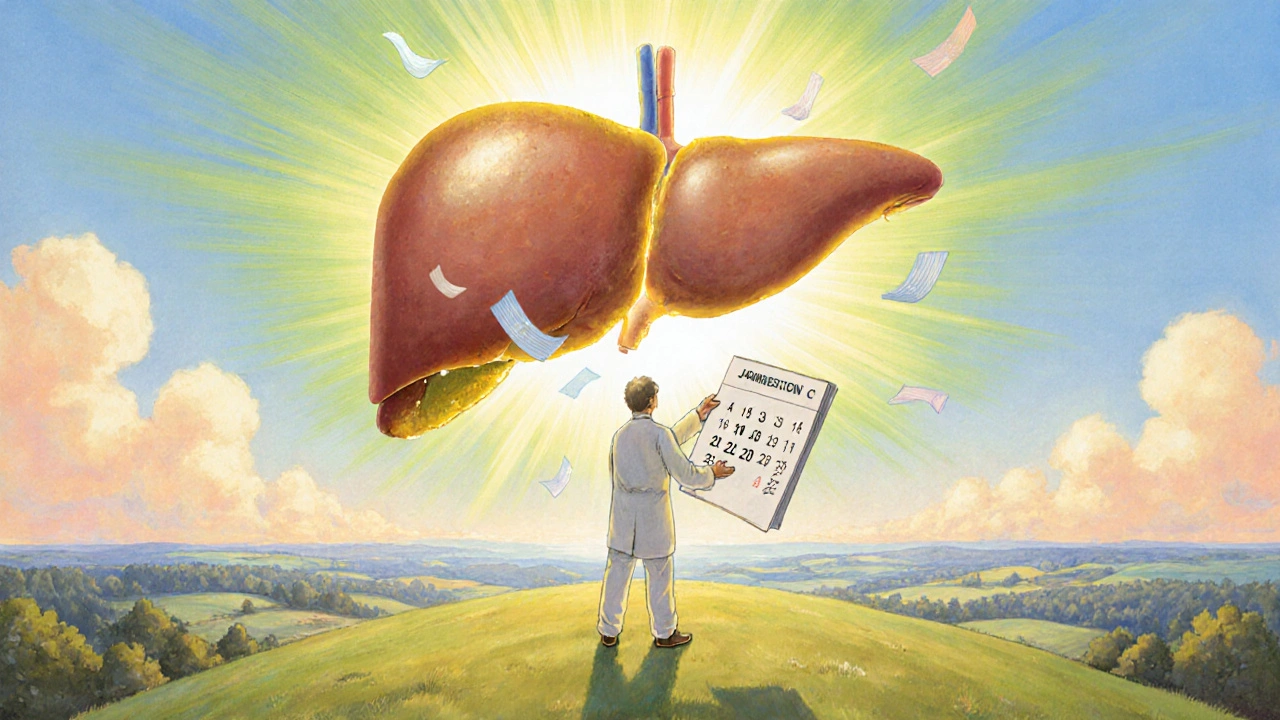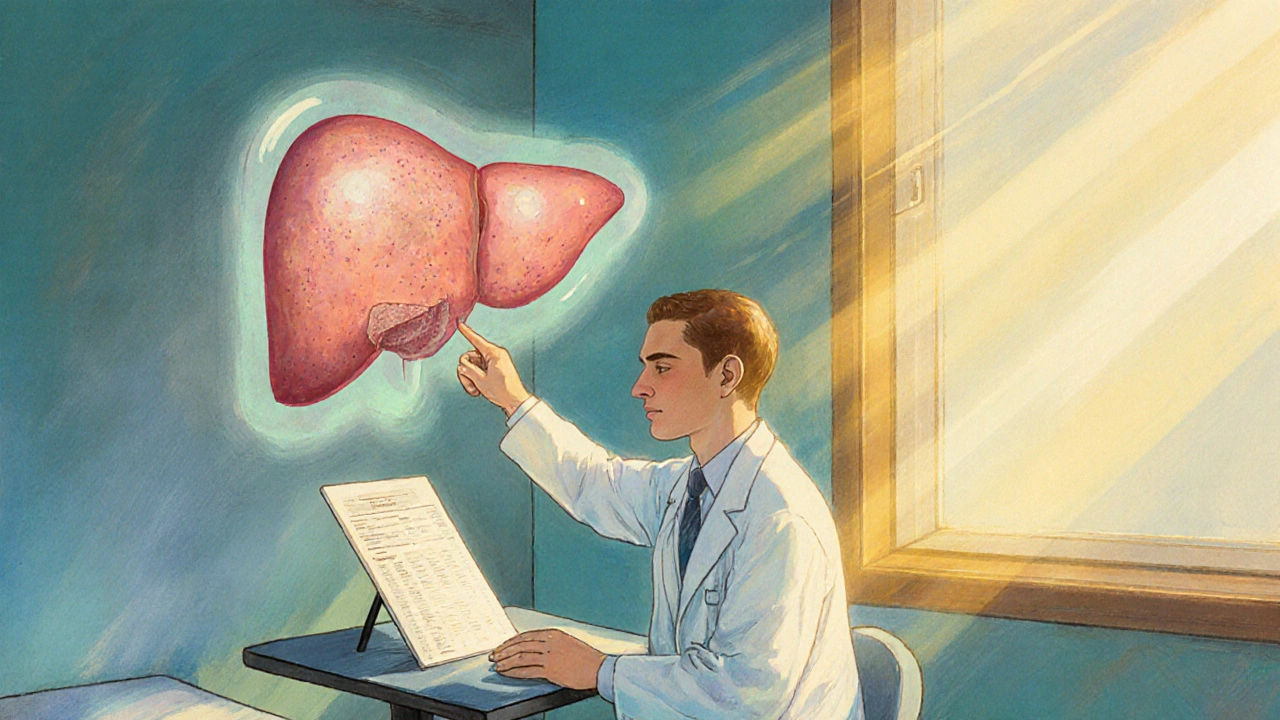Living with Genotype 3 Hepatitis C is a chronic condition that silently reshapes your liver over years. The virus prefers the third genetic variant, which tends to cause faster fibrosis and higher rates of fatty liver disease. Missing a routine doctor visit could mean letting the disease progress unchecked, and that’s the hook: a simple, regular check‑up can catch dangerous changes early enough to intervene.
Understanding Genotype 3 Hepatitis C
When doctors talk about hepatitis C, they often group the virus into six genotypes. Genotype 3 Hepatitis C is a subtype that is more prevalent in South Asia and parts of Australia, and it shows a stronger link to steatosis (fatty liver) and rapid fibrosis progression. The virus infiltrates liver cells, replicates, and triggers inflammation. Over time, scar tissue builds up, leading to cirrhosis or liver cancer if left untreated.
Why Regular Check‑ups Are Critical
Chronic infection doesn’t always produce obvious symptoms. Fatigue, mild abdominal discomfort, or occasional joint aches could be dismissed as everyday stress. That's why genotype 3 hepatitis c patients need a structured monitoring plan. Regular visits give clinicians the chance to:
- Track liver enzyme trends (ALT, AST).
- Assess fibrosis stage with non‑invasive imaging.
- Screen for early signs of hepatocellular carcinoma (HCC).
- Adjust antiviral therapy based on viral load.
Disease Progression and Risk Factors
Not every person with genotype 3 follows the same path. Several factors accelerate damage:
- Alcohol consumption - even moderate intake doubles fibrosis risk.
- Co‑infection with HIV or hepatitis B.
- Obesity and metabolic syndrome - they worsen liver steatosis.
- Delayed treatment initiation.
Understanding where you stand on the timeline helps you and your doctor decide how aggressive the monitoring should be.

Recommended Monitoring Schedule
Guidelines from the World Health Organization advise a baseline assessment at diagnosis, followed by periodic reviews tailored to disease stage. Below is a practical schedule that many Australian hepatology clinics adopt, aligning with the Australian Therapeutic Guidelines which outline specific intervals for HCV follow‑up.:
| Stage | Recommended Interval | Key Tests |
|---|---|---|
| Early fibrosis (F0‑F1) | Every 12 months | ALT/AST, HCV RNA, Ultrasound Elastography to measure liver stiffness. |
| Moderate fibrosis (F2‑F3) | Every 6‑12 months | Same as above + Alpha‑Fetoprotein for early HCC detection. |
| Compensated cirrhosis (F4) | Every 3‑6 months | Ultrasound + AFP + Imaging (CT/MRI) if needed. |
| Post‑treatment SVR | Every 6‑12 months for 3 years | AFP, imaging, and HCV RNA to confirm cure. |
Key Tests Explained
Each test in the schedule tells a piece of the liver health puzzle:
- Ultrasound Elastography provides a numeric stiffness score that correlates with fibrosis stage. It’s painless, quick, and more accurate than a standard ultrasound.
- Alpha‑Fetoprotein is a blood marker that rises when liver cells become cancerous. Elevated AFP prompts a detailed imaging work‑up.
- HCV RNA quantification measures the actual viral load, guiding therapy decisions and confirming a sustained virologic response (SVR).
- ALT and AST reveal ongoing inflammation; trends are more informative than a single snapshot.
Impact of Early Detection on Treatment Success
When fibrosis is caught early, Direct‑Acting Antivirals (DAAs) can eradicate the virus in >95% of patients, often within 8‑12 weeks. Achieving an Sustained Virologic Response means the virus remains undetectable 12 weeks after therapy, essentially a cure. Early treatment reduces the chance of progressing to cirrhosis or HCC, saving both health and healthcare costs.

Common Pitfalls and How to Stay on Track
Even with clear guidelines, many patients slip up:
- Assuming “no symptoms = no problem.” Schedule appointments regardless of how you feel.
- Missing reminders - set phone alerts or use a health‑app calendar.
- Skipping blood tests because they’re “just another lab visit.” Those numbers often catch tiny changes before you notice anything.
- Not discussing alcohol intake. Even low‑level drinking can accelerate fibrosis in genotype 3.
Partnering with a liver‑specialist nurse can provide accountability and answer questions between visits.
Quick Checklist for Genotype 3 Patients
- Mark your next appointment in your calendar BEFORE you leave the clinic.
- Keep a running log of ALT/AST results - note upward trends.
- Ask your doctor about the latest Ultrasound Elastography score and what it means for you.
- If you drink alcohol, discuss safe limits; consider complete abstinence if fibrosis is advanced.
- Stay informed about new DAA regimens - they continue to improve cure rates.
Frequently Asked Questions
How often should I get liver imaging if I have genotype 3?
For early fibrosis (F0‑F1) an annual ultrasound or elastography is enough. Once you reach moderate fibrosis (F2‑F3) the interval shortens to every 6‑12 months, and for compensated cirrhosis (F4) it’s every 3‑6 months, often combined with AFP testing.
Can I cure genotype 3 without side effects?
Modern Direct‑Acting Antivirals are highly effective and have minimal side effects for most people. Common complaints are mild fatigue or headache, which usually resolve on their own.
What does a rising AFP level mean?
AFP rises when liver cells start turning cancerous. A single bump can be benign, but a steady rise warrants imaging (CT or MRI) to rule out hepatocellular carcinoma.
Is alcohol completely prohibited after I achieve SVR?
If you have no advanced fibrosis, moderate drinking may be permissible, but many doctors recommend abstinence to protect the liver fully, especially in genotype 3 where fatty liver risk stays higher.
How long after treatment do I need follow‑up scans?
Guidelines suggest imaging and AFP every 6‑12 months for at least three years post‑SVR, then annually if no abnormalities appear.

